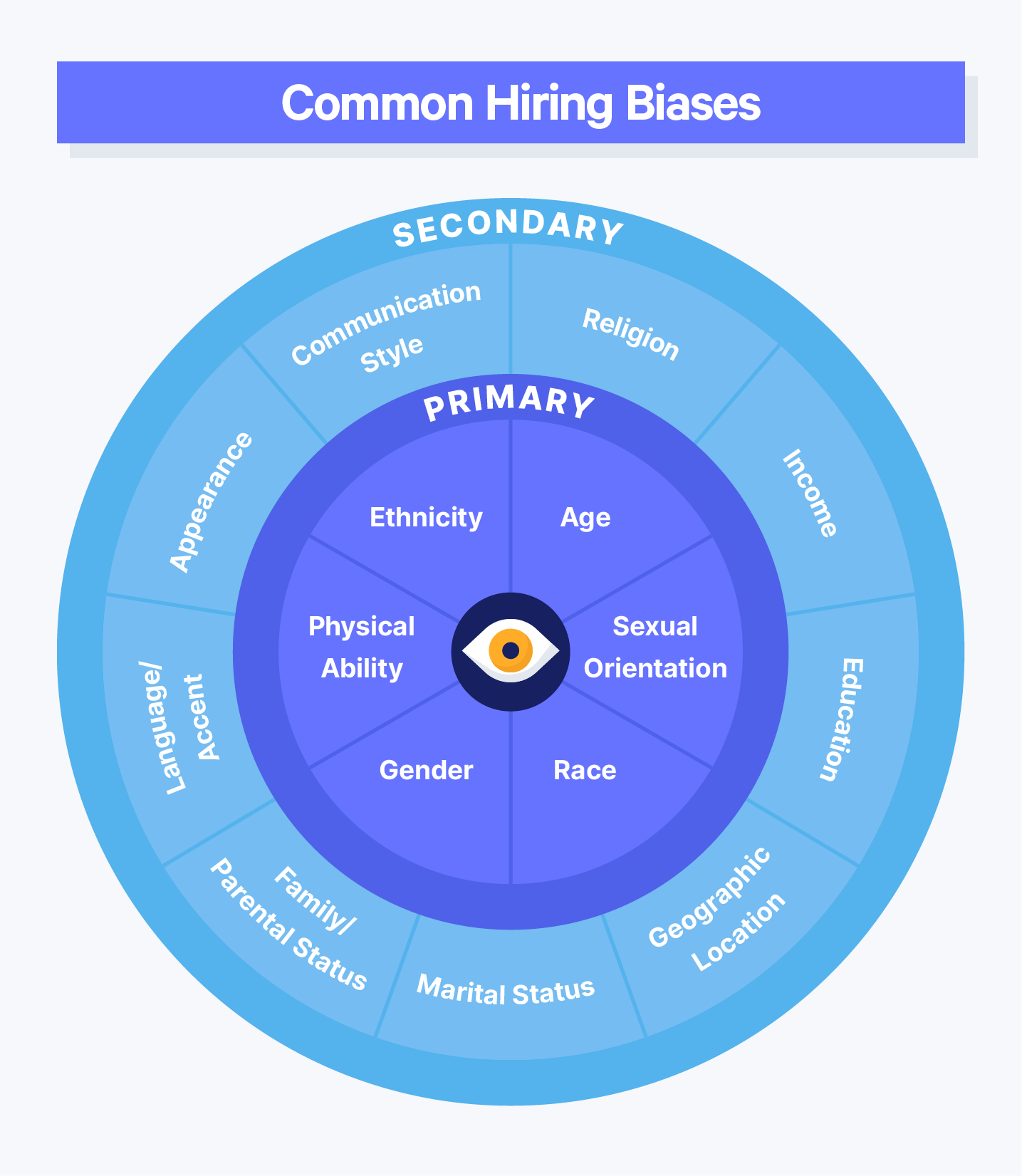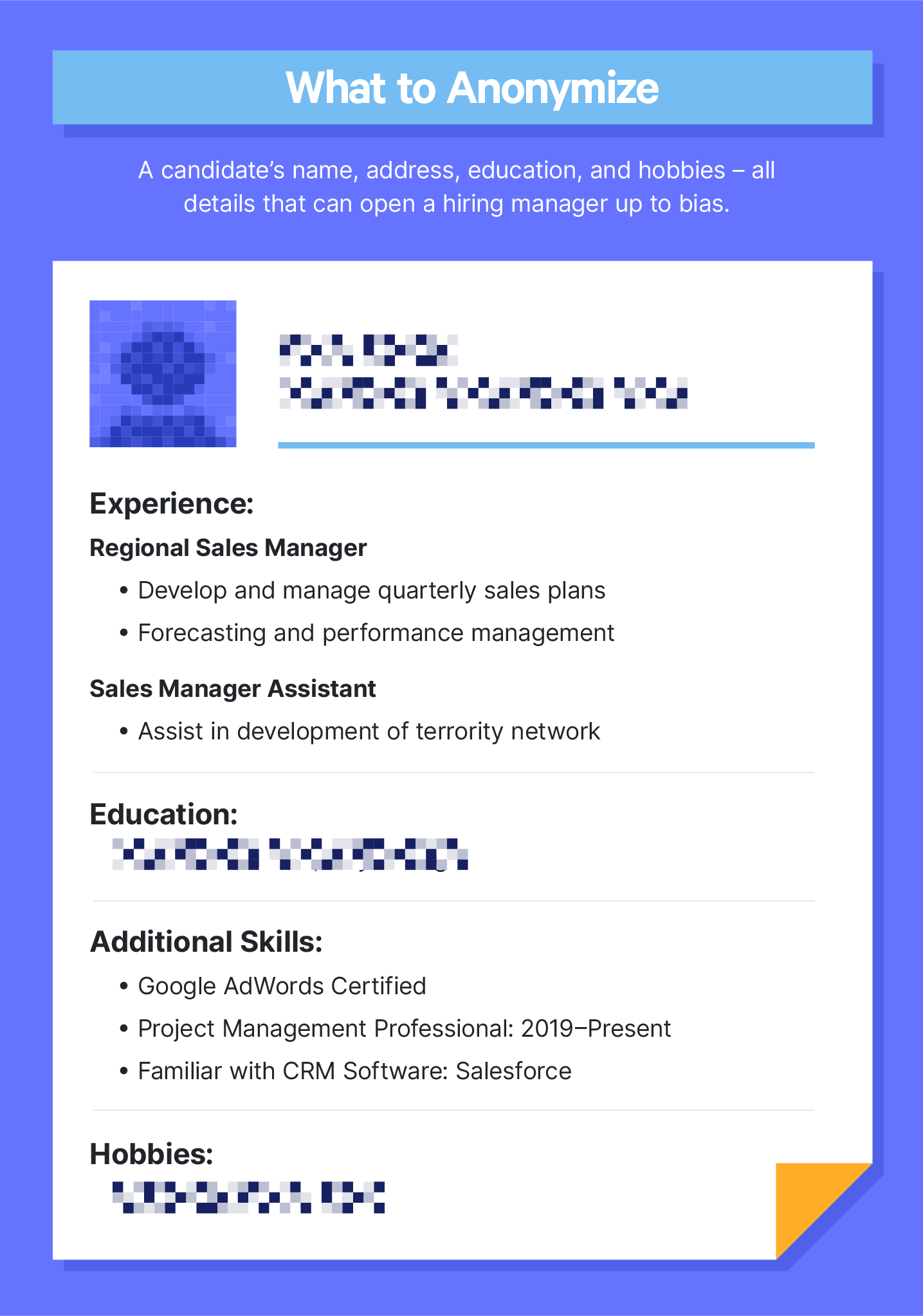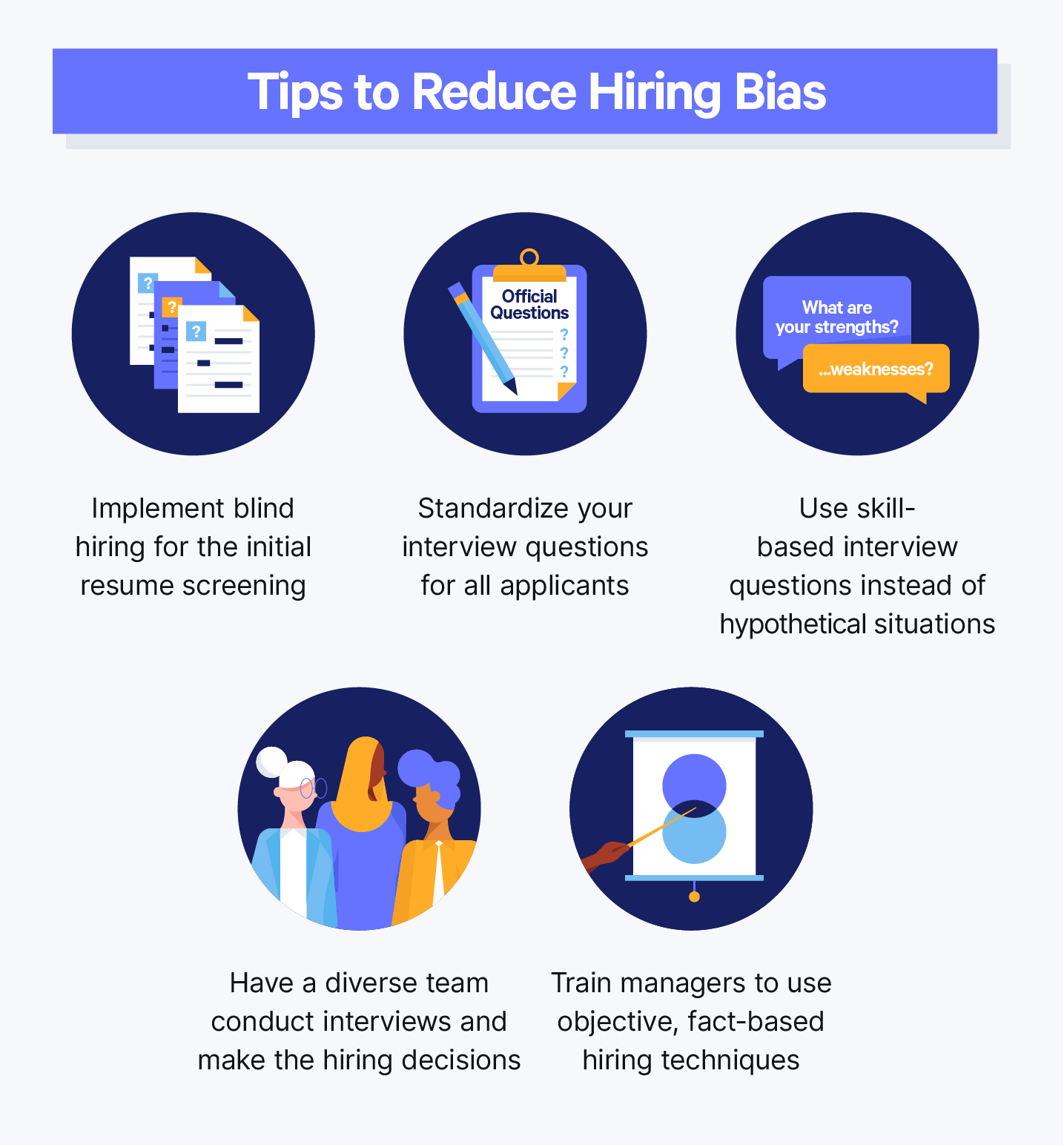What Is Blind Hiring? (How to Implement It)
Explore what blind hiring is, how it works, and ways to implement it into your own organization’s hiring process.
Table of Contents
Protect your business today!
Get a QuoteBlind hiring is a process used to block out personal information about a job candidate that could influence or “bias” a hiring decision. Bias can present itself in many ways—both unconscious and conscious—and research says that it can occur as early as the initial resume-screening phase. This is why leaders are looking for new ways to breathe diversity and inclusion into the hiring process and across the employee roster.
Companies like Deloitte, HSBC, and Virgin Money have implemented similar processes, but luckily, you don’t have to be a big business to attract the best talent. Let’s break down what blind hiring means, how it works, and how to implement this process in your own organization as you hire new employees.
How Blind Hiring Works
Blind hiring hides or “blinds” resume details like a candidate’s name, college, address, hobbies, or graduation year. These details can allude to someone’s gender identity, race, religion, or socioeconomic background, potentially influencing a hiring decision. Instead, recruiters or hiring managers focus on the candidate’s skills or prior work experience and how it pertains to the job. The goal of evaluating candidates based only on their relevant work experience is to reduce bias throughout the hiring process.
Types of Biases in Hiring
Vanderbilt describes unconscious (or implicit) bias as “unsupported judgments in favor of or against one thing, person, or group as compared to another, in a way that is usually considered unfair.” They also suggest research tells us that “unconscious bias occurs automatically as the brain makes quick judgments based on past experiences and background.”
Unconscious bias in the initial hiring process may cause hiring managers to make decisions in favor of a candidate or at the detriment of others (without even realizing it). Plus, these biases are not one-dimensional and typically intersect throughout the hiring process.
Biases may also appear unconsciously in job postings or descriptions. A Journal of Personality and Social Psychology study found that job descriptions with words that sway masculine such as leader, competitive, or dominant were less appealing to women. TotalJobs also analyzed 75,000 job listings and found the education or customer service industry positions were biased toward women, while science or marketing positions tended to sway toward men.
Why Companies Are Tackling Bias
Left unchecked, biases can impact or shape your company’s culture, engagement, and even bottom line. There are many reasons why companies are choosing to tackle this head-on and diversify their teams. Here are just a few of the benefits of having a diverse team:
- Increase in profits: Companies with “above-average diversity” have 19% higher revenues.
- Improved productivity: Diverse teams deliver 60% better results.
- Builds trust across your team: Diversity practices are directly linked to levels of employee engagement, trust, and value.
- Attracts top talent: Over 85% of millennials prioritize working for a business that conducts itself ethically and responsibly.
It’s no surprise that diversity is crucial in an organization. Consider the tips below on how to incorporate blind hiring into your hiring process.
How to Implement Blind Hiring
While no process is perfect, if you’re looking to promote diversity or reduce bias in your hiring process, blind hiring can be the first step.
If you have the budget to invest in an HR resource or tool, below are some options:
- Blendoor: Obscures the names and photos of candidates to combat unconscious bias and facilitate diversity recruiting in tech companies.
- Textio: Assesses your job descriptions, highlights problematic phrasing, and offers recommendations to help you attract diverse and qualified candidates.
If you’re a small yet mighty team that doesn’t want to spend extra funds on a tool, there are easy ways to implement blind hiring practices yourself. Below are a few simple methods to consider:
- Filter out with a spreadsheet: Hiring managers can pull data into a spreadsheet and simply filter out specific details.
- Customize your application: Create a standardized application for applicants to include just their relevant skills or experience.
Does Blind Hiring Work?
While the initial resume screening may help reduce bias, it can come up later in the hiring process if the hiring manager and candidate have a virtual meeting. There are also factors to consider in the effectiveness of blind hiring. By blocking out key details about a person’s background, it may be more difficult for hiring managers to ensure they are hiring a diverse staff. Blind hiring may also shield a candidate’s behavioral cues or personality — factors that can signal if someone is a good company culture fit.
Tips to Prevent Hiring Bias
To accomplish your company’s diversity goals, it may go beyond just blind hiring. As mentioned, bias can present itself later in the interview or decision-making process. People, operations, and tech are all entry points for hiring bias. From training employees on biases to standardizing your questions, consider what works best for your team and company size.
Below are a few steps to help you prevent (or reduce) hiring bias:
- Neutralize your job descriptions: Use gender-neutral language and be mindful of your word choice to attract a diverse pool.
- Standardize your interview questions: Place focus on skill- or talent-based questions instead of behavioral ones.
- Diversify your hiring staff: Have a recruitment panel with a mix of men and women, cultural diversity, and a wide age range.
- Prepare skills assessments: Shift the focus away from gender, age, background, or personality to assess a candidate by knowledge.
Working to combat hiring bias can act as the stepping stone that empowers your company to tackle even bigger challenges down the line.
As your business aims to implement new processes, employment practices liability insurance coverage can help protect your company and provide coverage for potential risks along the way.



